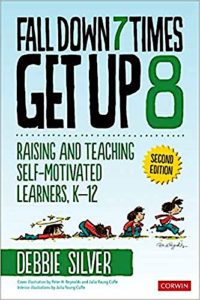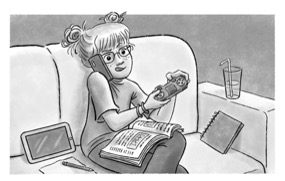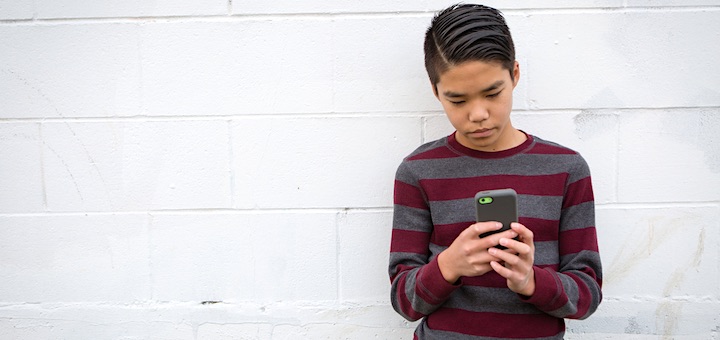Helping Gen Z Students Balance Digital Life
When we say things like, “Well, I remember what it was like when I was a teenager,” here is John Duffy’s response: “The truth is, you were never this teenager.”
As a middle school teacher one of my favorite activities was from the Project Learning Tree program, which utilizes the outdoors to enhance learning experiences across all subject areas.
In a forested area behind our school, I asked the students to find separate trees that appealed to them, sit quietly for 10 minutes, and just think about what it would be like to be that tree. They then sketched the tree and wrote a paragraph or poem to express their thoughts.
Their writings were deeper and more meaningful than on any prior assignment, often giving me a glimpse into their inner thoughts and struggles. Generally, their treatment of one another seemed markedly improved for at least a little while following the activity. I remember wondering if there were something magical about being outside and being with nature.
And now I sometimes wonder – is the magic gone for good?
The Ever-Widening Gap
As Richard Louv emphasized in his book, Last Child in the Woods (2005), there seems to be an ever-widening gap between modern kids and the natural world. And think of the revolutionary technology that has evolved since Louv’s groundbreaking work was written. The gap is becoming a chasm.
Children are suffering more anxiety and depression, which many researchers attribute to overuse and misuse of personal devices and social media. Too much screen time has evolved into a big crisis for teachers, parents, guardians and students.
Here’s an activity I often suggest that teachers and parents/guardians try:
Take 3 minutes and watch this Nature Valley/3 Generations commercial.
After you watch the video answer these questions:
-
-
- To what extent do you think this video is an accurate depiction of childhood today?
- Do you think the children’s descriptions of their online activities fall within the parameters of safe, healthy, and responsible use? Why or why not?
- What if any steps do adults need to take to ensure that kids get enough outdoor and free playtime?
-
Free play is important not only for social and emotional (SEL) skill building but also for the development of essential neural pathways in the brain.
Lukianoff and Haidt (2018) report that most mammals play a game similar to the children’s game of Tag. In species that are predators, such as wolves, their pups seem to prefer to be the chasers. In species that are prey, such as rats, the pups prefer to be chased.
Play is essential for wiring a mammal’s brain to create a functioning adult. Mammals that are deprived of play won’t develop to their full capacity. The authors believe that children, like other mammals, need free play in order to finish the intricate wiring process of neural development. They also conclude, “Children deprived of free play are likely to be less competent – physically and socially—as adults. They are likely to be less tolerant of risk, and more prone to anxiety disorders.” (p. 193)
The ”New Tween/Teen”
Jean Twenge, a social psychologist at San Diego State University, calls the generation following the Millennials “iGen” which is short for “internet generation.” (Some call this age group “Generation Z.”)
In her 2017 book iGen, Twenge notes that children born after 1995 are the first generation to have grown up with total access to the internet during their entire lives. By the time they reached middle school, they had smart phones and social media readily available to them.
As tech has become more powerful and easy to use, she believes that countless members of iGen or Generation Z have become addicted to their personal devices and have started spending far less time than any previous generation meeting with friends and participating in free play.
Twenge and other researchers are on a mission to alert adults about how much time kids spend on their personal devices as well as what they are doing while they are on them. Currently there are numerous books, articles, and TV specials that raise the alarm bell about dangers lurking in social media and with personal devices.
“Experts” list extensive rules for restricting student access and use of mobile phones and other internet-ready devices, as well as provide endless tips for teachers and parents/guardians on how to censor what children are doing.
Instead of scaring teachers and parents/guardians into micro-managing their learners 24/7, wouldn’t it be much healthier to focus on general safety precautions and sensible use agreements with our kids? Shouldn’t we be preparing students to use self-regulation for making appropriate choices with digital media now and in the future?
Today’s Middle Graders Are Different
Dr. John Duffy (2019) cautions that the transition period formerly called the “tween stage” (students around 10-13) is quickly disappearing. In his practice he sees “children who are developmentally sprung from childhood into adolescence without the cushion of a couple of years to get accustomed to new thought patterns and behavioral draws.” (p. 25)
Duffy explains to teachers and parents/guardians that it is impractical to compare our lives to those of today’s tweens and teens. When we say things like, “Well, I remember what it was like when I was a teenager,” his response is, “The truth is, you were never this teenager.”
Teenage concerns, free of the weight of social media “likes,” the pace of online chaos, the overarching academic pressures, and the wildly unreasonable body image demands, are artifacts of an era gone by. (p. 21)
Two things struck me when I read Duffy’s book. Number one was the statement that none of us were ever this teenager. I think it’s unfortunate, but it’s true. As parents and teachers/guardians we must be aware that the digital world has brought all kinds of unique negative stress to tweens and teens already prone to compare themselves to others as they struggle for personal identity.
Tweens and Teens Didn’t Ask for This
When I become exasperated with kids and their media obsession, I reflect on Duffy’s second point – for this generation, it’s always been this way. They didn’t create it, and they didn’t ask for it.
I remind myself that it is my job to help guide them through the same lessons of resiliency, self-efficacy, autonomy, and growth mindset I teach in other areas. I cannot and should not control every aspect of their experience with the digital world.
But as Silicon Valley-based expert on teen behavior Ana Homayoun (2017) points out, I can guide them and give them reasonable freedom and responsibility with “bumper lanes” when needed.
Guidelines for Tweens and Teens
We teachers, parents and guardians need to keep up a constant dialogue (not lectures) with learners about the amount of time they spend and the quality of what they do with their personal devices.
Ongoing conversations should be calm and nonjudgmental. Homayoun advises us to focus on healthy socialization, safety, and self-regulation. “We need to help kids make better choices intrinsically.”
The following guidelines are common sense practices I’ve assembled since I first read Last Child in the Woods and now. Adjust for your age group.
Helping Kids Find Balance
in the Digital World
- Have them write out a plan for all the things they have to do each day – school, chores, reading for pleasure, outdoor play, homework, practice, meals, bath/shower, sleep, etc. and attach times required for each activity. They can fill in the remaining time with preferred screen activities. Talk about the plan together and make any adjustments necessary. As much as possible, hold them to their plan.
- Ask them to turn alerts off and check their phones only at pre-determined times.
- Look at the screen time function on their devices together and discuss the amount of time spent on various activities. Encourage them to keep a written record of how much time they spend on their devices and what they do during that time. Have a conversation about how their device use aligns with their goals and dreams.
- Have a discussion about how digital devices, games, and apps are created to perpetuate addictive behavior. Ask kids to identify indicators in their programs that evidence intentional manipulation by the designer. Once they become aware of how they are being influenced, it is easier for them to resist the beeps and blinks.
- Declare a moratorium on device use at regular intervals. It can be for certain hours each day, for one day on the weekend, or something else. Pick times that work best for your classroom or family.
- Create a “Cinderella Rule” that indicates the time devices must be turned off and placed in a designated spot (away from its owner). It remains there until morning (home) or the next activity (school).
- Regularly talk with your learner in an open and ongoing discussion, free of lectures. Ask open-ended questions about issues they may well be struggling with that you are either unaware of or do not fully understand. Emphasize safe, healthy, and responsible use of devices and social media.
- Model the behavior (both digitally and otherwise) you want to see from your learner.
- Stay informed about your learner and maintain your precious connection with them.
- Don’t forget to play!
Please feel free to provide additional ideas you have in the comment section below. I would love to hear how you are helping your learners make the time to free play and find balance in the digital world.
“Yes, kids love technology, but they also love Legos, scented markers, handstands, books, and mud puddles. It’s all about balance.”
— K.G., first-grade teacher
References:
Duffy, J. (2019). Parenting the new teen in the age of anxiety: A complete guide to your child’s stressed, depressed, expanded, amazing adolescence. Coral Gables, FL: Mango Publishing.
Homayoun, A. (2017). Social media wellness: Helping tweens and teens thrive in an unbalanced digital world. Thousand Oaks, CA: Corwin.
Louv, R. (2005). Last child in the woods: Saving our children from nature-deficit disorder. Chapel Hill, NC: Algonquin Books of Chapel Hill.
Lukianoff, G., & Haidt, J. (2018). The coddling of the American mind: How good intentions and bad ideas are setting up a generation for failure. London, UK: Penguin Random House.
Silver, D. (2021). Fall down 7 times, get up 8: Raising and teaching self-motivated learners. Revised edition. Thousand Oaks, CA: Corwin Publishing.
Twenge, J. (2017). iGen: Why today’s super-connected kids are growing up less rebellious, more tolerant, less happy – and completely unprepared for adulthood – and what that means for the rest of us. New York, NY: Atria Books.

Debbie offers more information and resources on SEL and self-motivated learners in her recently released and extensively revised Fall Down 7 Times, Get Up 8 (2nd ed.): Raising and Teaching Self-Motivated Learners. (Corwin Press, 2021) Visit her website.






































Dr. Silver,
I found your blog very eye-opening. I watched the 3 generation commercial and was sad for my students and my children. Children are growing up in an internet world, which adds stress that they don’t need to deal with yet in their adolescent years.
I found the part about helping students find balance in the digital world very helpful. From that list, is there one recommendation you found to be the most successful with parents?
Thank you for your blog. I was reminded of what was important: letting our kids be kids and explore the world.
Great informative post! Thank you for sharing this valuable information. I will share this in one of my blog posts with full credit to you. I share these same beliefs as we move deeper into this technology fast-paced, driven world.
Relationship building is based on the number of followers, likes and comments you generate on your social platforms. You cannot just have one; you need to have multiple ones! If you can’t make it outside, to a vacation or to a cool concert it is perfectly fine. There are enough filters and techniques to mask and just make life up as you go. Sally Jones looks like she went to a fabulous party. Create one better! No one will ever know.
Then you have these virtual reality games that really mess with your mind and you can pretend to be in so many different places doing so many things. I believe we may be developing with issues of not being in touch with our reality.
Great work in bringing the ideas forward!
Hi Julie B! Thanks so much for your comments and your question. I, too, was moved by the Nature Valley video. It made me sad for this new generation of learners.
You asked for one recommendation I found to be the most successful for parents. I think everything positive for kids starts with relationships, so I would advise starting with #7 on the list: Regularly talk with your learner in an open and ongoing discussion, free of lectures.
Ask open-ended questions about issues they may well be struggling with that you are either unaware of or do not fully understand. Emphasize safe, healthy, and responsible use of devices and social media. Keeping the lines of communication open (staying calm, approachable, and available) are the building blocks for all the other steps. Let me know if you have other questions, okay?
Thank you! I will try #7 on your list. I have daily conversations with my kids at home, free of lectures when possible. I strive for discussions. I feel we have excellent open communication, and I always try to use open-ended questions whenever possible. My goal is to try this at school. I am trying to build relationships with students at the start of this school year through communication. I am hoping by creating connections; we can have conversations on staying safe and responsible on social media. I want this generation to have a healthy relationship with their devices and social media. Any suggestions for this in a school setting?
I think it’s great that you want to extend your connections to your students. Here’s a resource I think you will valuable:
Common Sense Education is a website developed with Harvard’s Project Zero. It offers lesson plans for teachers and parents/guardians in grades K-12. It provides the most up-to-date research on digital uses as well as excellent ideas and activities for helping students develop their self-efficacy about appropriate media use. Here’s the link to Common Sense Education- https://www.commonsense.org/education/
Hi Brenda YoHo!
I share your concern about the false reality presented to tweens and teens through social media as well as video games. Just today I came across an article that addresses this same topic. You might want to take a look at it:
https://www.tampabay.com/news/health/2021/09/07/tampa-bay-teens-are-depressed-and-anxious-social-media-deserves-blame/
Thank you for writing and sharing your views. Don’t hesitate to reach out if you want to discuss further or ask any questions. Best wishes, Debbie
Dr. Silver,
I enjoyed reading this article and your tips to helping kids find balance among our digital world. I especially like #1, having students allocate time to the different things they must do every day. I think making them aware of how much time they are actually on their devices is good to know, so when they make excuses as to why something was not completed, they can see that they did in fact have time for it, but it was just not used appropriately. Time-management is a great skill to have for learners to be able to balance all aspects of their lives.
The Nature Valley video was extremely depressing to me! Most of my favorite memories are outside in nature, and when I ask my students what the favorite part of their weekend/summer was, they very rarely have anything to say about outside or physical activities, almost all is to do with technology of some sort. As a parent, it is very concerning to me, and I will make sure to make it extra intentional that playing outside or doing something active without technology is a must every day.
I might even find it helpful to try #1 for me!
Hi Desirae!
Thanks so much for your comments. I could not agree more about how important it is for learners to be aware of how they can control their time. This particular trait is a vital executive function skill that can be developed and practiced once students are aware of their responsibility in setting boundaries. I’m with you in thinking that it would be additionally helpful for me to try applying #1 to my own life! And, like you, the Nature Valley video made me sad. I am happy to report that many schools are now moving towards including more outdoor classroom activities. I so appreciate hearing from a parent who is intentional about having her children step away from technology and going outside on a regular basis!
Dr Silver,
I really enjoyed reading through your blog section about tweens. I can absolutely attest to the statement “none of us were ever this teenager.” Today’s teenagers and tweens have so many more social media hurdles to jump versus when we were kids. It is a totally different world out there now.
When we as teachers try to guide students in the right direction of balance, i struggle to relate to their home lives because so many of them have different stories. Have you found an example or idea that helps students find balance in their own ways?
I look forward to reading more of your blog posts!
Thanks!
-Heidi
Hello Heidi!
You bring up a significant point about responding to the various back stories and situational environments of our students. Sharing various scenarios with students and brainstorming together about best solutions can empower students to think creatively about how to solve their own dilemmas. I would focus on helping learners think about what they CAN and what they CANNOT control (in any situation).
Teaching kids to minimize the influence of factors beyond their control helps them learn the lifelong quality of self-efficacy. Using a planning formula like the “If/Then” strategy is also helpful. Find a free template here: https://www.teachingkidstothrive.com/uploads/5/9/2/3/5923451/if_then_2.1.pdf
Dedra Stafford and I have other helpful free helpful downloads at TeachingKidstoThrive.com
Let me know if you need anything else or want to talk more about this topic. Thank you for writing!!